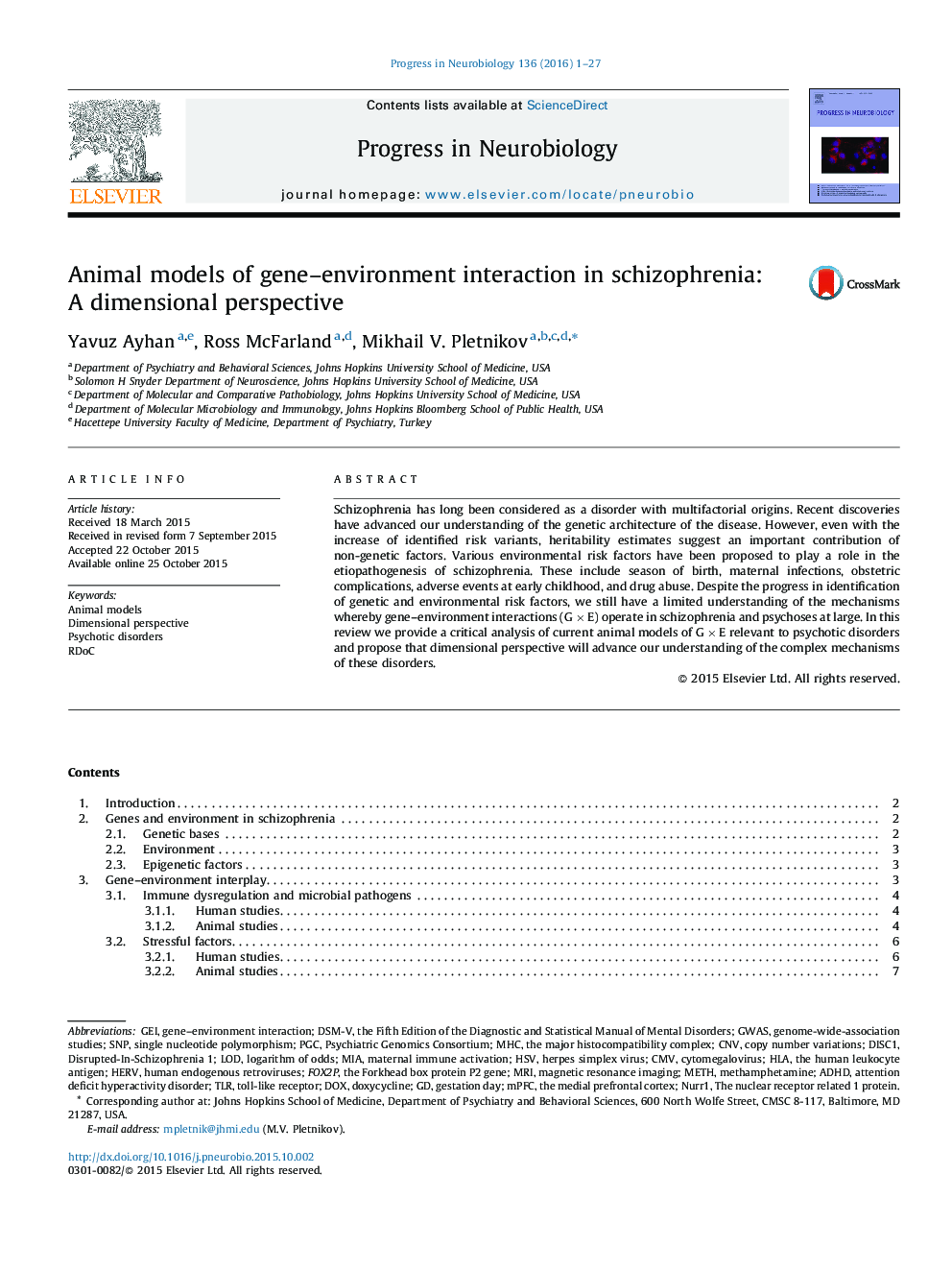| Article ID | Journal | Published Year | Pages | File Type |
|---|---|---|---|---|
| 4353238 | Progress in Neurobiology | 2016 | 27 Pages |
•Gene–environment interactions (G × E) contribute to psychotic disorders.•Animal models of G × E help uncover the underlying mechanisms.•Dimensional approach to animal models will facilitate mechanistic studies.
Schizophrenia has long been considered as a disorder with multifactorial origins. Recent discoveries have advanced our understanding of the genetic architecture of the disease. However, even with the increase of identified risk variants, heritability estimates suggest an important contribution of non-genetic factors. Various environmental risk factors have been proposed to play a role in the etiopathogenesis of schizophrenia. These include season of birth, maternal infections, obstetric complications, adverse events at early childhood, and drug abuse. Despite the progress in identification of genetic and environmental risk factors, we still have a limited understanding of the mechanisms whereby gene–environment interactions (G × E) operate in schizophrenia and psychoses at large. In this review we provide a critical analysis of current animal models of G × E relevant to psychotic disorders and propose that dimensional perspective will advance our understanding of the complex mechanisms of these disorders.
